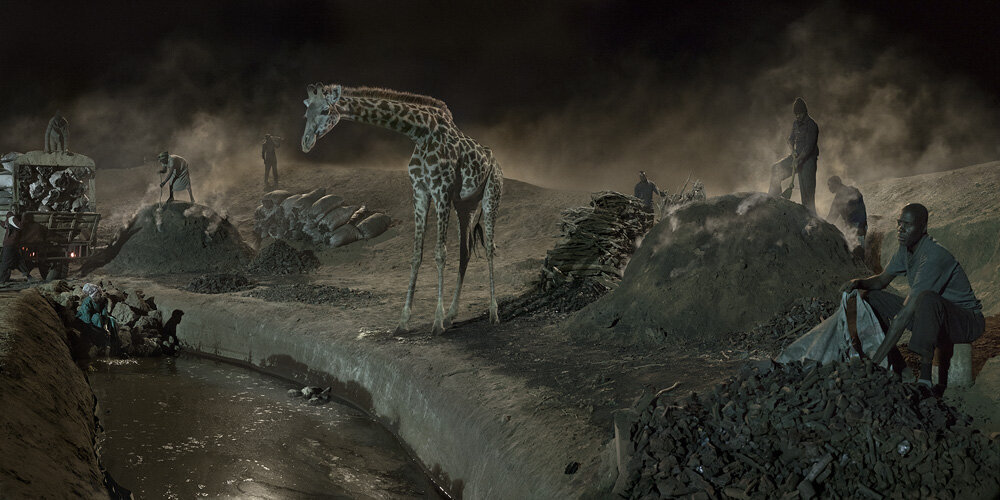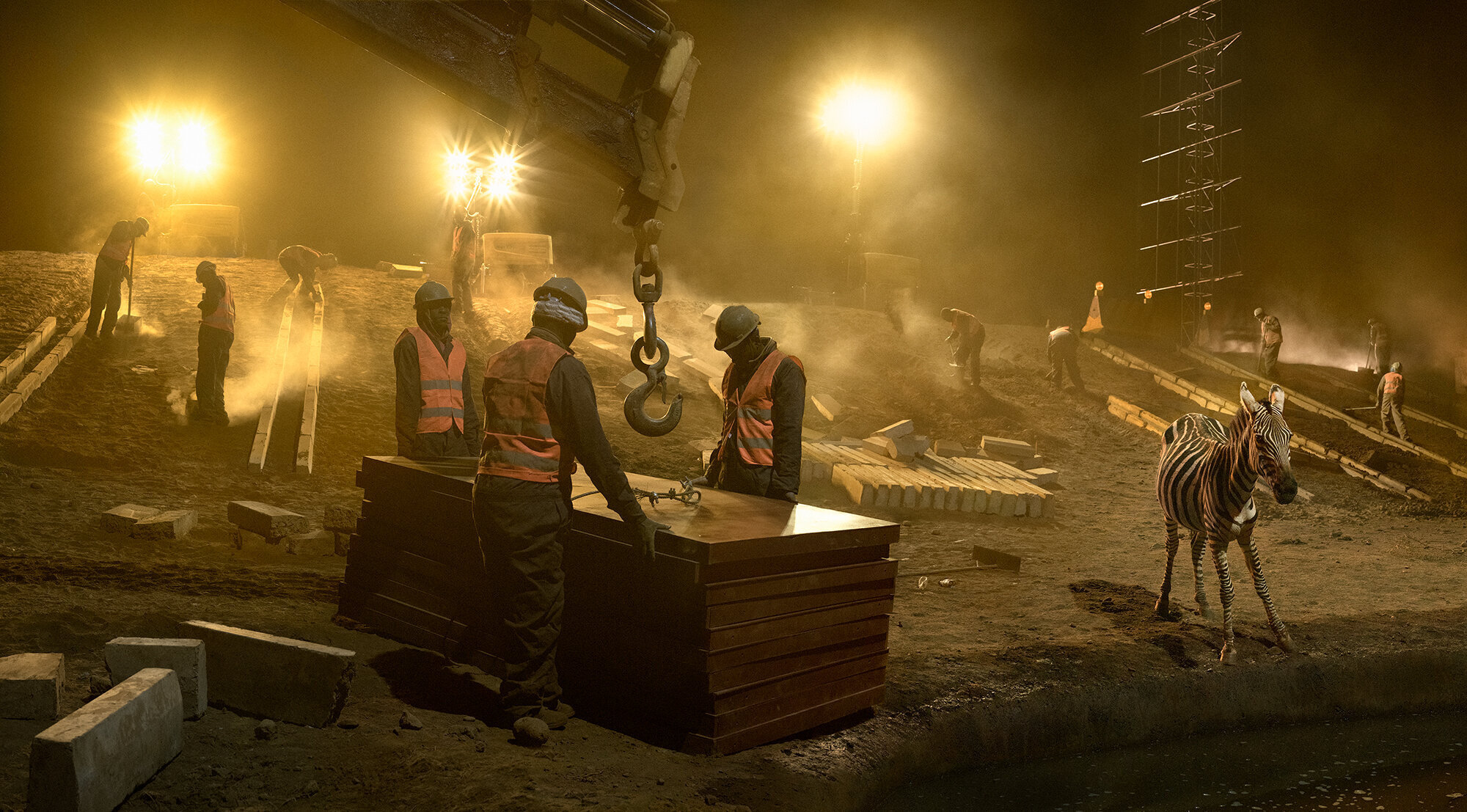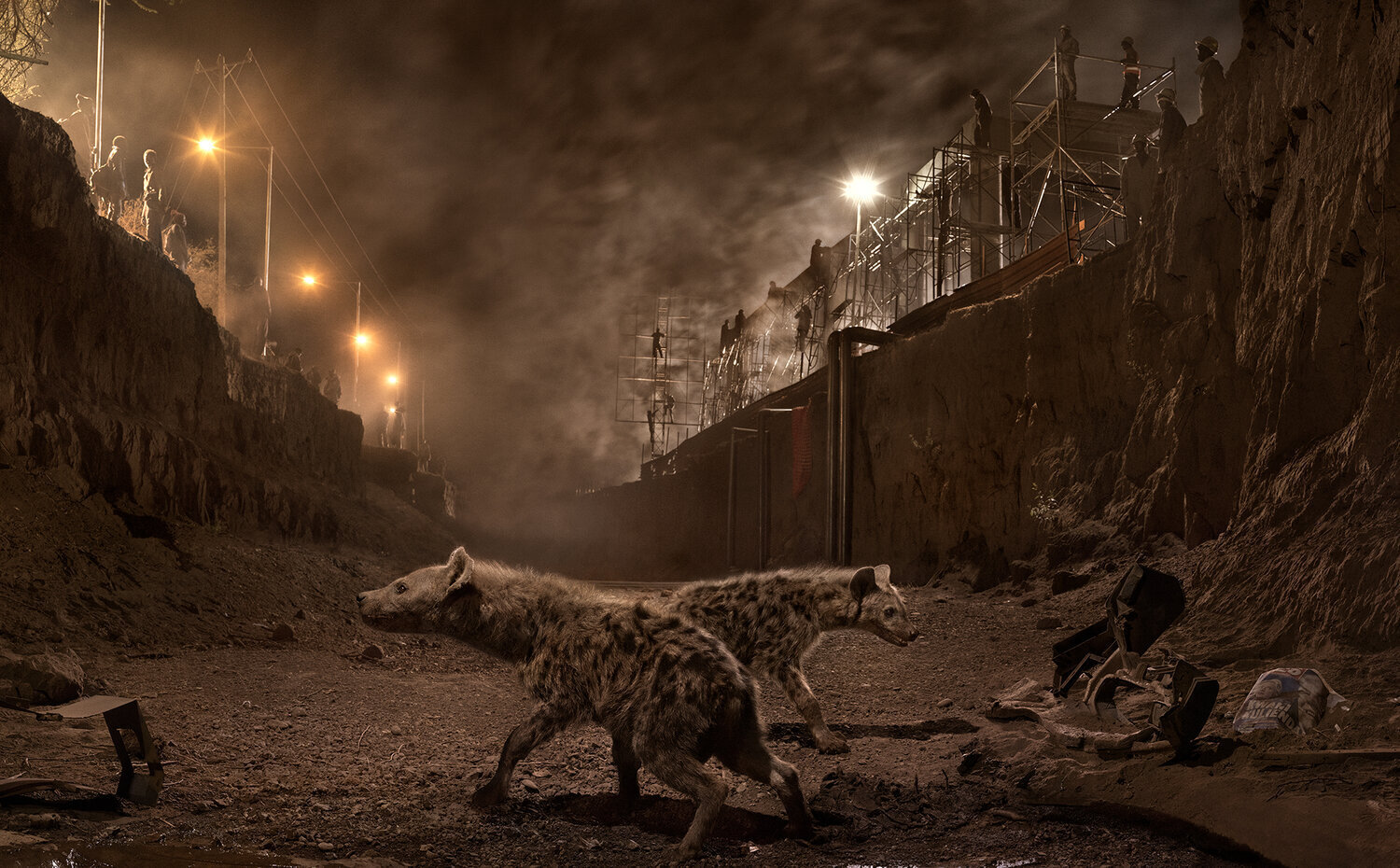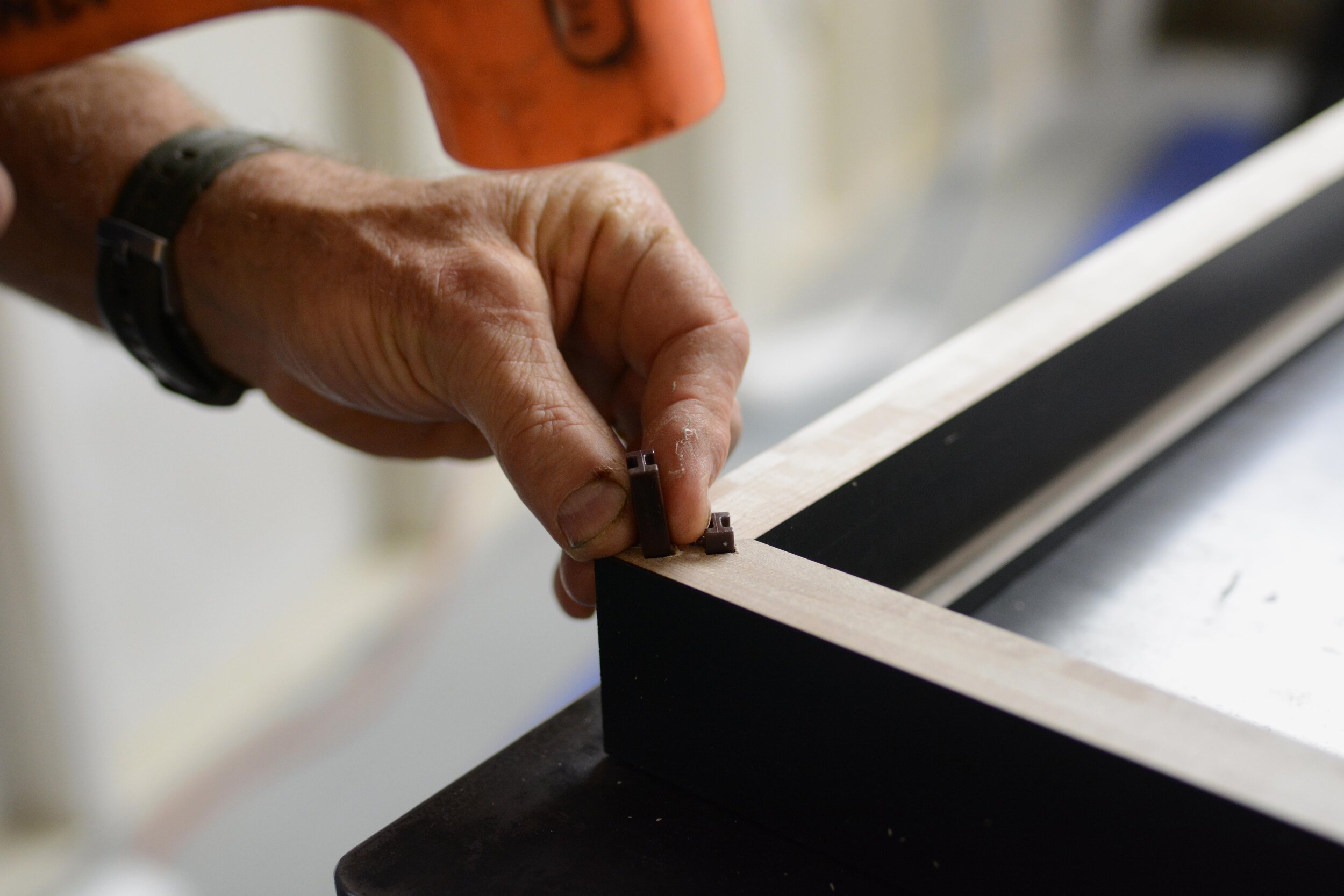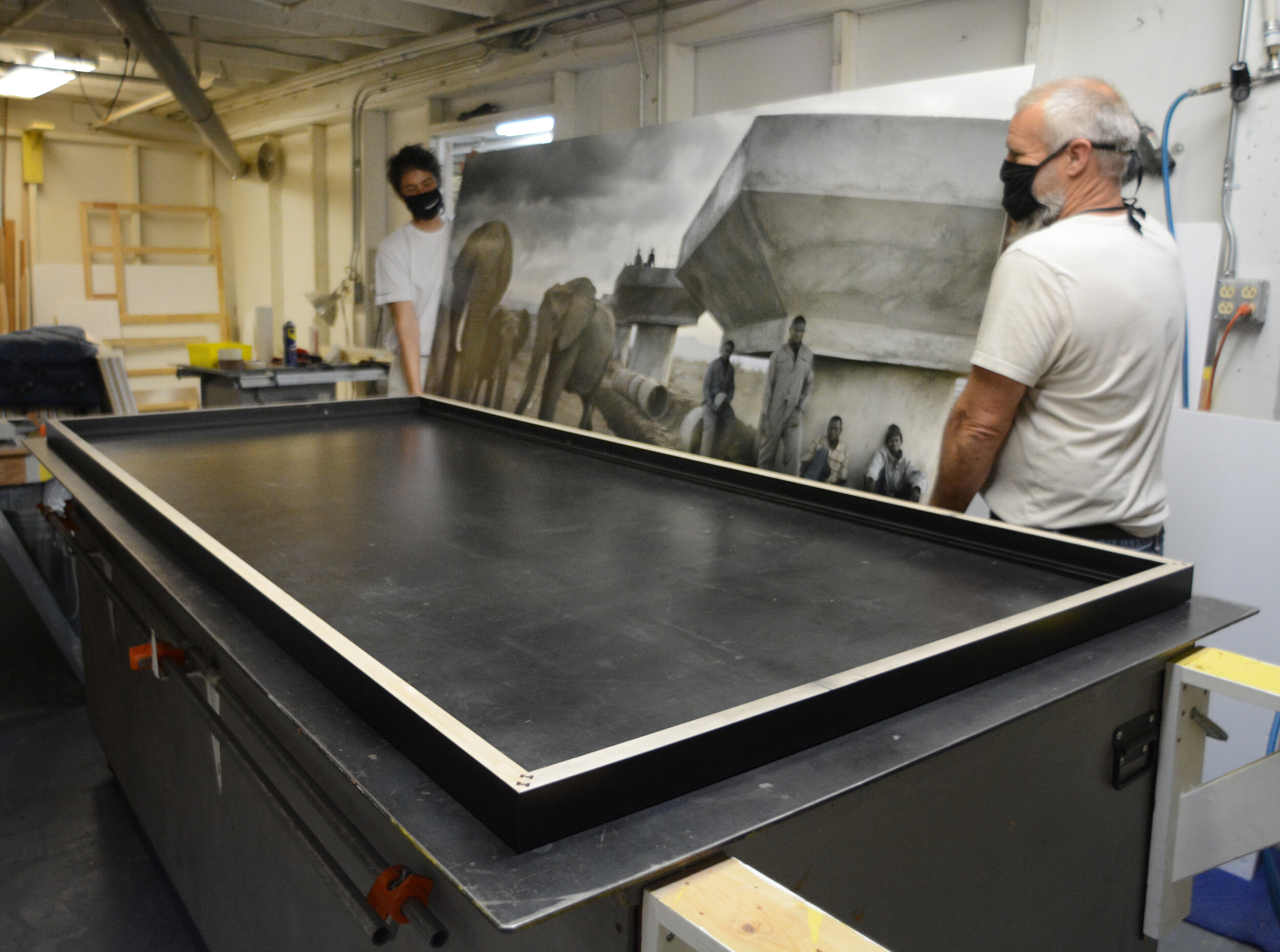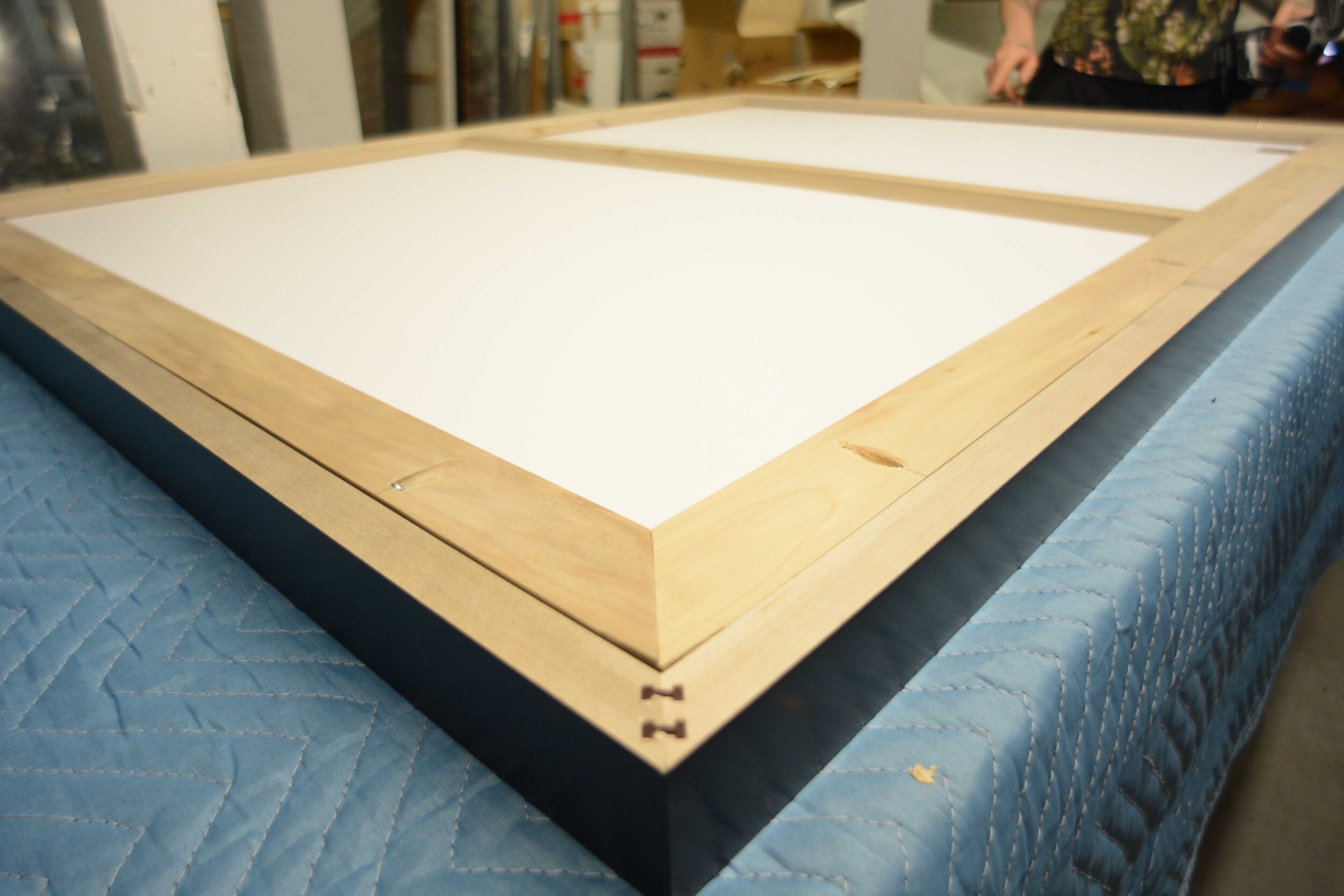Presenting Large-Scale Prints: Curatorial’s Approach to Nick Brandt’s This Empty World
Curatorial Inc.’s non-profit Exhibitions division produces compelling and relevant touring exhibitions for a variety of museums and other exhibiting venues as a highly affordable alternative to creating exhibitions from scratch. Curatorial Exhibitions newest fine art photography exhibition, This Empty World, presets thirty-one large-scale photographic works by Nicholas Brandt. It imagines a future where the reach of human development has encroached so extensively upon natural environments that we see the ruin of animal habitats and fragile ecosystems. Nick Brandt gives us a vision through his works that provoke, inspire, and allow us to realize the future now.
With the help of the Maasai community in Kenya, Brandt harmlessly photographed wild animals in their natural habitat, and then built production sets in the same exact location to capture the human elements. The resulting layered images show a dystopian future where native fauna collides with urban development, conveying the consequences felt by rural and indigenous communities alongside the wildlife. Brandt’s work is also designed to focus public awareness on the efforts of Big Life Foundation, a nonprofit organization that Brandt co-founded in 2010, to protect 1.6 million acres of wilderness in East Africa. His skill at creating seamless and realistic composite images helps elevate his message beyond a simple warning of a collapsing ecosystem by giving a sense of photographic verisimilitude anticipates the consequences of the destruction of our earthly environment. If left unchecked, it will become the norm everywhere.
To reach a wider audience and tell his story in a meaningful way, Brandt produced this body of work by creating very large high quality photo prints—the largest measuring five feet tall by ten feet wide. Rather than seeing on a smartphone or computer screen, large prints help convey this story by immersing the viewer in the image. To minimize distracting reflections, Brandt chose to show these prints unglazed, without glass between the image and the viewer. This method of presentation allows for optimized viewing of complex images, where rich detail is a physical act of looking closely, and where one can stand and gaze into their tableaux worlds.
From a production point of view, mural-sized prints come with their own set of technical problems that require specialized solutions for their preparation, presentation, and safe transportation. Curatorial’s art services team transformed them into a fully prepped framed and crated exhibition, ready for domestic or international art shipping for their museum exhibition.
To maintain flatness on such large pictures, the prints were archivally cold mounted onto ¼” thick composite sheet material made of polyethylene and aluminum, a substrate that resists bending and warping. Once mounted, an archival protective clear coat is sprayed onto the photograph to prevent damage from light, moisture, and touch. Naturally, all the archival materials used in this project were chosen to protect the prints and stabilize them from deterioration over time.
Simple, clean, black museum quality picture frames surround the photographs, a choice meant to foreground the images. A peculiar aspect of a well-made exhibition, however, is that simple, unnoticed presentation often belies robustness and complexity. The frames are made from engineered American maple, meaning that separate strips of the hardwood were glued together, and the resulting laminate is considerably stronger and resistant to warping over long distances. With many of the frames in this exhibition being over ten feet long, such structural integrity is crucial to the durable ongoing performance of the frames. In the Curatorial framing shop, the corners are joined using a routed T-slot and hidden nylon insert system that locks the corners tightly together, maintaining a strong and stable join.
The mounted photos are secured inside the frames and locked into place with a rear-fitting bevel-edge strainer, a sturdy inner frame, giving further structural integrity to the perimeter molding. The strainer’s other crucial job is to allow the reverse bevel wall strips, or cleats, to serve as hidden attachments to secure the framed art to the gallery wall, making art installation easier and conforming with professional art handling practices. Both the cleats and strainer were milled with corresponding angles, so when the whole frame is raised above then lowered onto the cleat, the strainer is captured, securely holding the entire frame perfectly flat and tight against the wall.
This exhibition was designed to travel from venue to venue, so the Curatorial crate shop made custom fine art shipping crates to protect the large and unglazed frames. Crates for traveling exhibitions must be robustly built due to their repeated use during art transportation services, but they also must comply with international shipping material regulations meant to prevent foreign insect infestations. These large crates use approved plywood for all walls, battens, and skids, have walls roughly one inch thick, and were outfitted with archival foam supports, braces, and dividers that firmly hold multiple pieces in place while absorbing shock and vibration. With the careful help of the museum industry’s dedicated art handlers, these crates will withstand the rigors of repeated unpacking and repacking and ensure that the exhibition arrives in perfect condition for each venue.
The first stop for This Empty World is the Museum of Texas Tech University, in Lubbock, opening May 23, 2021. The emphasis on ecological issues and the plight of wild animals raised by this art exhibition are in sync with the spectrum of subjects covered by this museum. In addition to fine and folk arts of the American west, there is a focus on paleontology and the study of large animals that are long extinct—Brandt and Big Life Foundation are looking at big animals, too, but these are in danger of being extinct prematurely.
As a result of the COVID-19 pandemic, closures worldwide have caused a staggering 77% drop in attendance across the museum industry. Never have museums been required to do more programming for less money. It is this type of vulnerable institution—small to midsized, university affiliated, and mission driven—that Curatorial Exhibitions seeks to serve by offering high quality exhibition programming at a fraction of the cost that it would take for a museum to build such exhibitions on their own.



